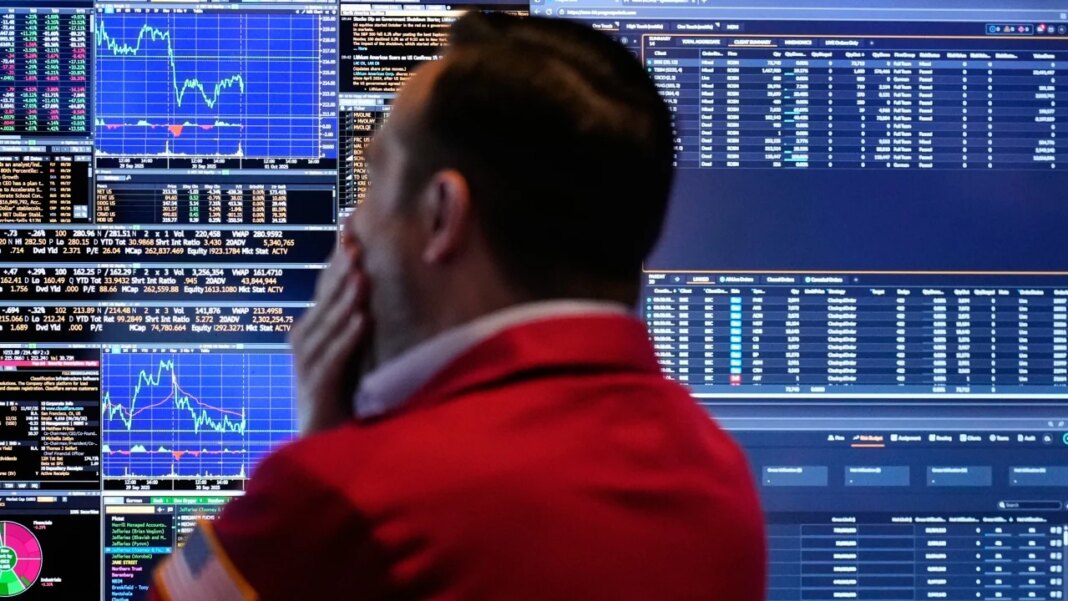Wall Street Turmoil: The Impact of Trump’s Tariff Threat on U.S. Stocks
A monthslong period of tranquility on Wall Street came crashing down recently following President Donald Trump’s alarming announcement regarding tariffs on China. In a dramatic turn of events, the S&P 500 plummeted 2.7% on a particularly tumultuous Friday—marking its worst performance since April. The Dow Jones Industrial Average also faced a significant decline, dropping 1.9%, while the Nasdaq Composite saw an even steeper 3.6% decrease. Initially, stocks were on an upward trajectory, only to be abruptly derailed by Trump’s proposal to significantly increase tariffs on Chinese imports.
The Catalyst for Decline
Trump’s announcement, conveyed through his social media platform, expressed his displeasure over China’s restrictions on exports of rare earths—materials crucial for manufacturing a wide range of products, from consumer electronics to jet engines. “We have been contacted by other countries who are extremely angry at this great trade hostility, which came out of nowhere,” Trump wrote, intensifying fears about deteriorating trade relations. He also hinted that a previously planned meeting with Chinese President Xi Jinping might be off the table, further escalating tensions between the world’s two largest economies.
Market Reaction and Investor Sentiment
The fallout was immediate and widespread, with approximately four out of five stocks within the S&P 500 experiencing declines. Notable companies were affected, ranging from tech giants like Nvidia and Apple to smaller firms navigating the choppy waters of trade uncertainty. Analysts suggest that the market was primed for a downturn, particularly after surging to unprecedented heights. Following a robust 35% increase from a low in April, many investors had begun to question the sustainability of such rapid gains.
With concerns mounting over valuations, critics argued that stock prices had risen disproportionate to corporate earnings. This skepticism was particularly pronounced within the booming artificial intelligence sector, with some observers drawing parallels to the infamous dot-com bubble of 2000—a stark reminder that not every boom is built to last.
Individual Stock Movements
Amidst the turmoil, certain stocks faced heavier losses than others. Levi Strauss, for instance, saw its shares plummet by 11.8%, despite reporting stronger-than-expected quarterly profits. The company’s guidance for the year aligned well with Wall Street predictions; however, analysts noted that heightened expectations following a nearly 42% stock price increase earlier in the year may have set the stage for a normalization in stock values.
Shifts in the Oil Market
The chaos in the stock market was mirrored in the oil sector, where benchmark U.S. crude prices fell 4.2%, settling at $58.90 per barrel. This drop occurred alongside a ceasefire between Israel and Hamas in Gaza, engendering hopes for reduced violence in the Middle East. Less geopolitical tension may lead to fewer disruptions in oil supplies, subsequently lowering oil prices. However, Trump’s tariff threat further complicated the situation, raising concerns over global trade and fuel consumption.
Brent crude, another marker in international oil pricing, also faced a decline of 3.8%, reducing its price to $62.73 per barrel.
Interest Rates and Consumer Sentiment
In the bond market, the yield on the 10-year Treasury bond fell to 4.04% from 4.14%, indicating a flight to safety amid stock market volatility. Prior to Trump’s tariff disclosures, investor anxiety was already evident, driven by a lack of consumer confidence as articulated by the University of Michigan. Their findings indicated that economic concerns—particularly high prices and stagnating job prospects—were weighing heavily on consumer sentiment.
Joanne Hsu, director of the Surveys of Consumers, echoed these concerns: “Pocketbook issues remain at the forefront of consumers’ minds. At this time, consumers do not expect meaningful improvement.” This consumer caution comes in the backdrop of a slowing job market that prompted the Federal Reserve to cut its primary interest rate last month for the first time this year, with additional cuts anticipated.
Global Market Ripple Effects
The repercussions of these U.S. market challenges extended beyond American borders, as global indexes reflected similar downturns. In Asia, Hong Kong’s Hang Seng index fell by 1.7%, while Japan’s Nikkei 225 dipped by 1%. However, South Korea’s Kospi index bucked the trend with a 1.7% increase as trading resumed following a holiday break.
Overall, the volatility sparked by Trump’s tariff threats has served as a potent reminder of how quickly market sentiment can shift in response to geopolitical tensions and economic forecasts. As investors brace for potential further fluctuations, the landscape ahead is fraught with uncertainty, creating an environment where every piece of news carries significant weight.



